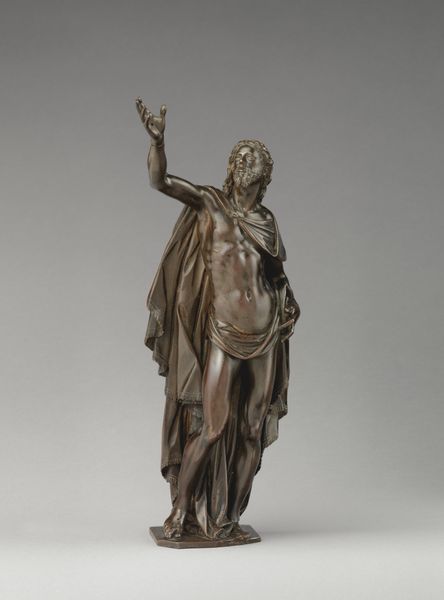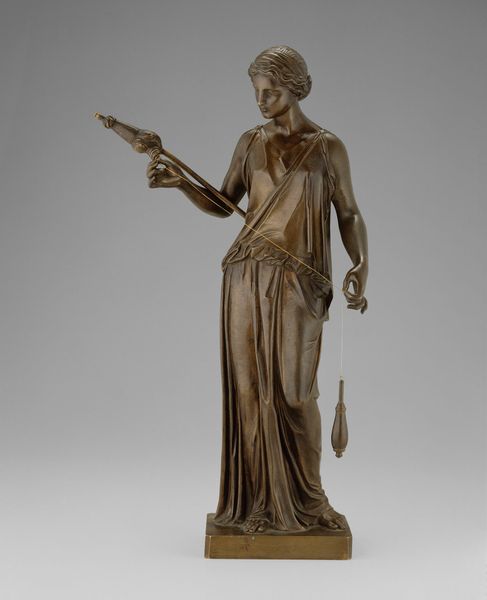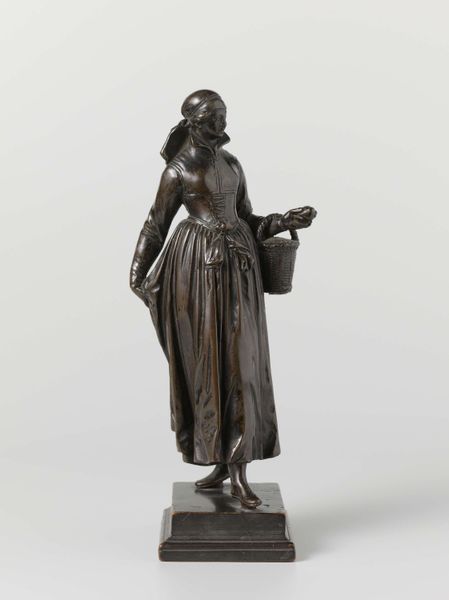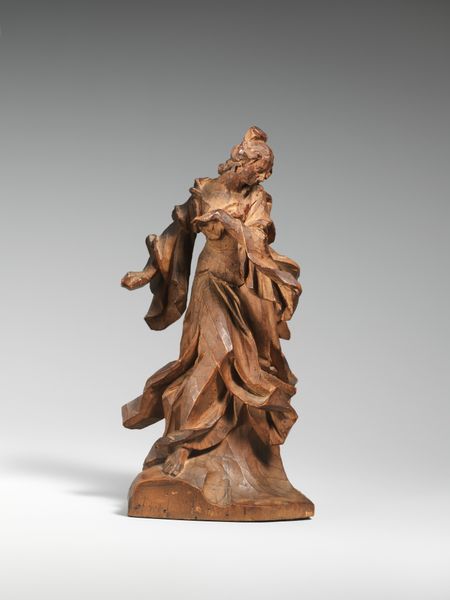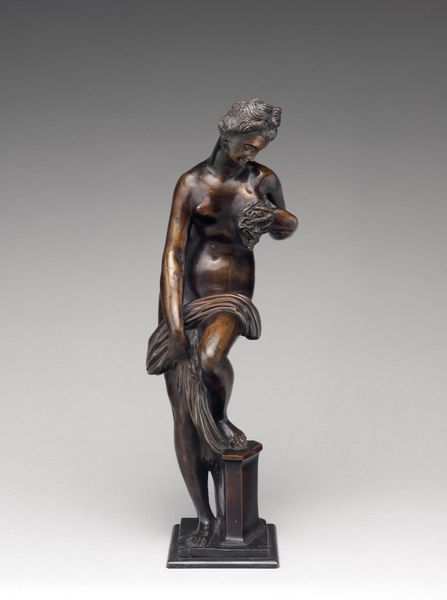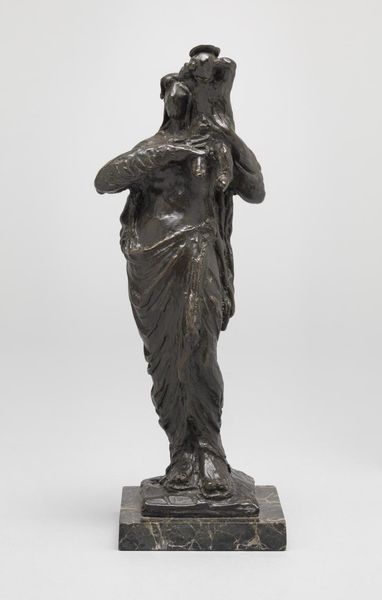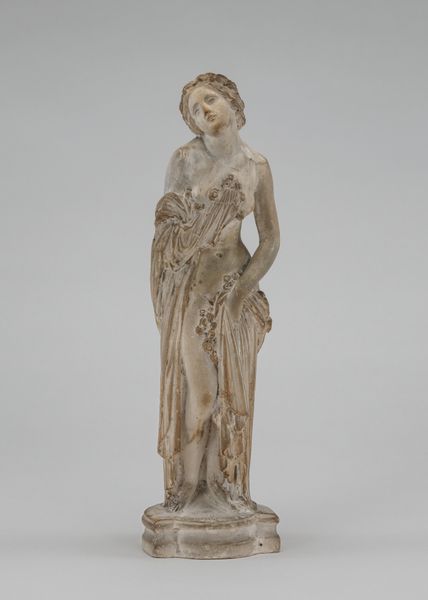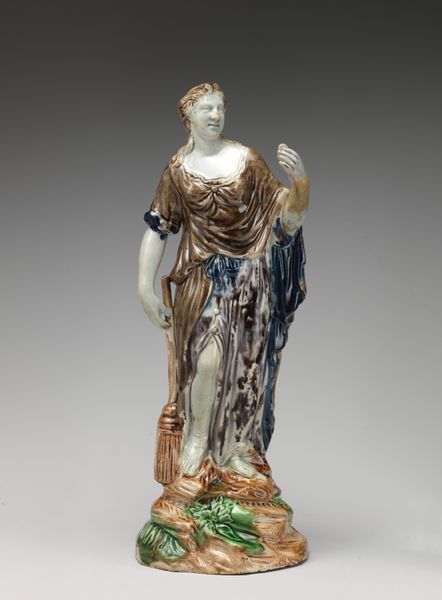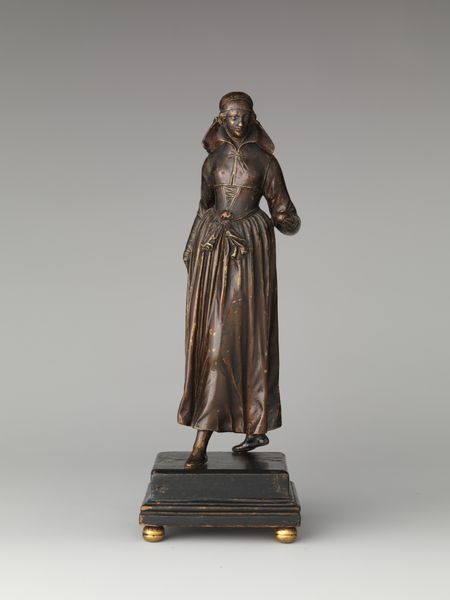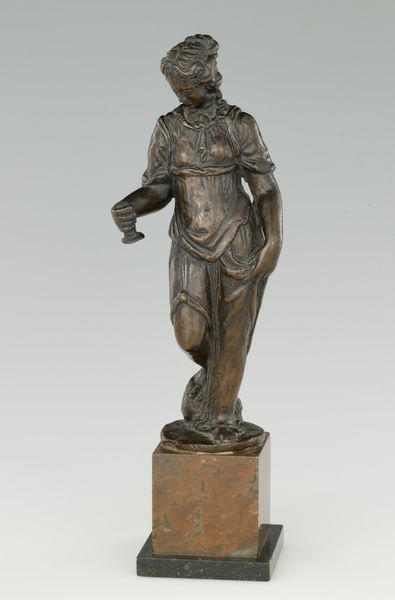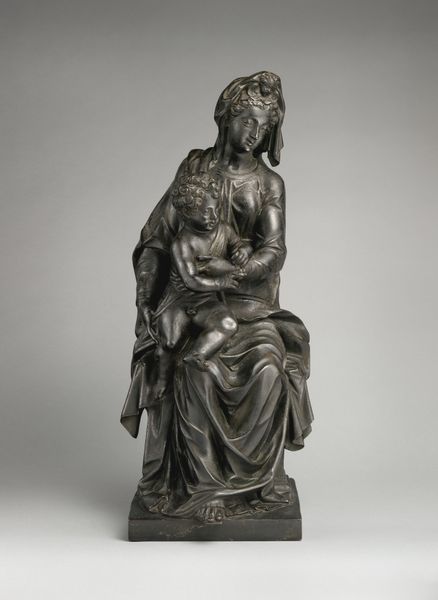
bronze, sculpture
#
portrait
#
sculpture
#
bronze
#
figuration
#
11_renaissance
#
classicism
#
sculpture
#
history-painting
#
decorative-art
#
italian-renaissance
Dimensions: Overall (confirmed): 19 × 9 × 4 in. (48.3 × 22.9 × 10.2 cm)
Copyright: Public Domain
Editor: We’re looking at a bronze sculpture called *Sibyl*, created sometime between 1530 and 1565 by Agostino Zoppo. The figure has an interesting air of contemplation. She holds a small tablet or book. What significance might this figure and the book hold? Curator: Indeed. This ‘Sibyl’ resonates with a cultural memory stretching back to antiquity. Sibyls, in the classical tradition, were oracles, women believed to possess prophetic abilities, linking the human and divine realms. Bronze, the material itself, adds another layer. Think of its durability, its capacity to preserve and transmit stories across centuries. This *Sibyl* becomes a conduit, a focal point for enduring wisdom. Notice how the drapery suggests both modesty and revelation, the subtle turn of her head... what emotions does she evoke in you? Editor: Definitely thoughtfulness and maybe a hint of restrained power. I suppose the book might signify the transmission of this prophetic wisdom? Curator: Precisely. And think, too, about the Renaissance context. The rediscovery of classical knowledge fueled artistic and intellectual innovation. By depicting a Sibyl, Zoppo participates in that revival, reconnecting with ancient sources of authority. But beyond that, it is a fascinating symbol. Where did you first encounter such figures, and what did they convey to you then? Editor: That’s a really insightful way of looking at it. Seeing it as a symbol of enduring knowledge. It makes the piece much more resonant than just a pretty bronze. Curator: I think that understanding allows us to appreciate the piece as more than just beautiful; it is a layered historical symbol of human wisdom across time.
Comments
No comments
Be the first to comment and join the conversation on the ultimate creative platform.
